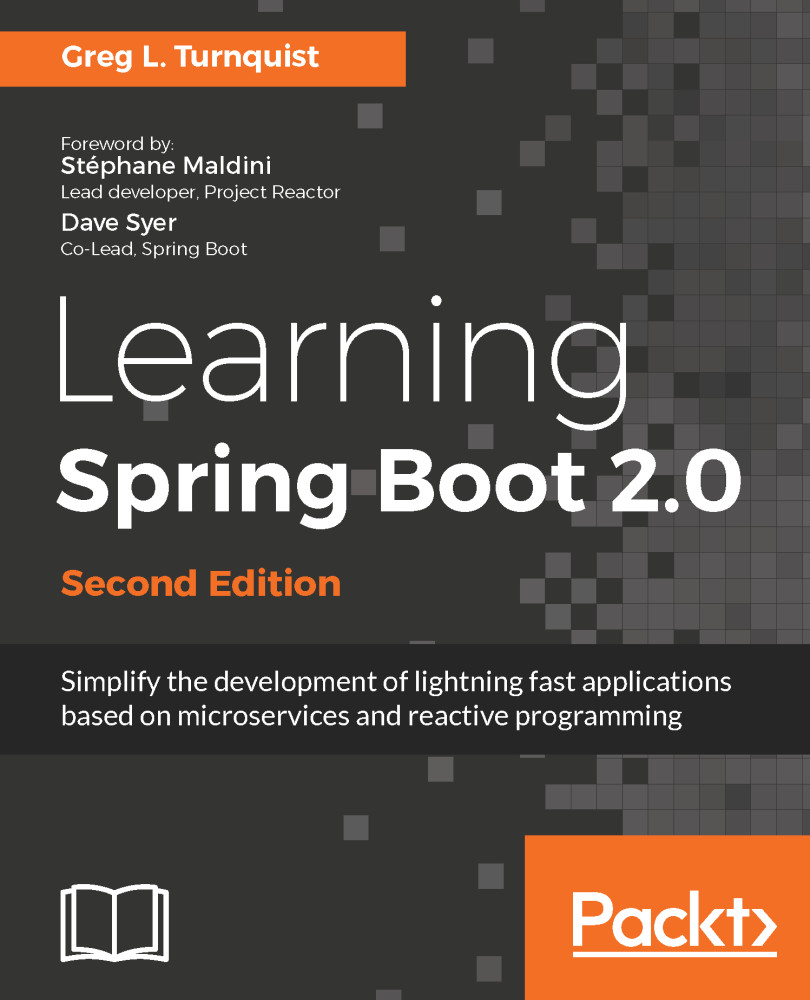Very impressed with @springboot so far, 10 mins to get a REST service up and running, now to add MongoDB. No black magic under the covers!
– Graham Rivers-Brown @grahamrb
In the previous chapter, we started putting together the frontend bits of our social media platform using Spring WebFlux. The missing critical ingredient was a data store. Few applications exist that don't touch a database. In fact, data storage is arguably one of the most critical components we encounter with app development. In this chapter, we'll learn how to persist information in a reactive data store (MongoDB), and learn how to interact with it.
In this chapter, we will be doing the following:
- Getting underway with a reactive data store
- Wiring up Spring Data repositories with Spring Boot
- Creating a reactive repository
- Pulling data through a Mono/Flux...



